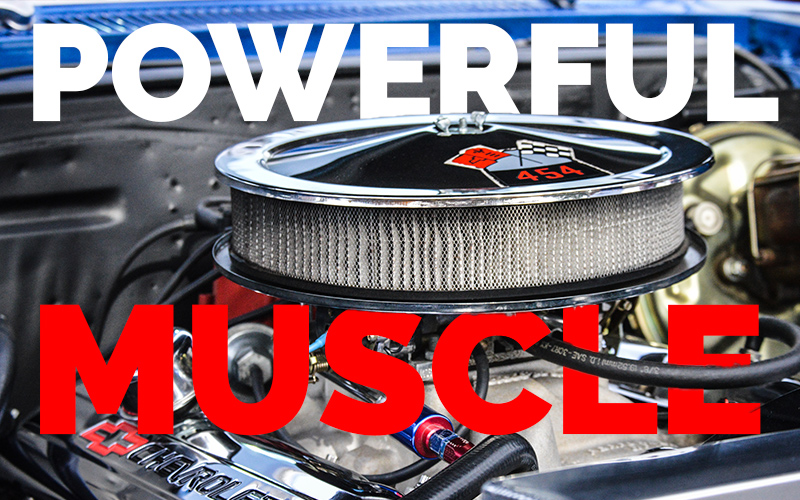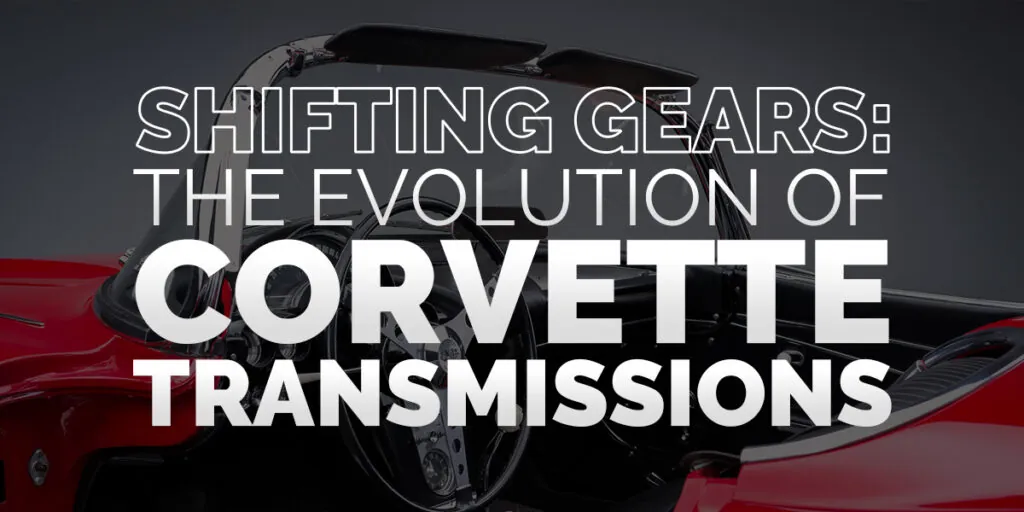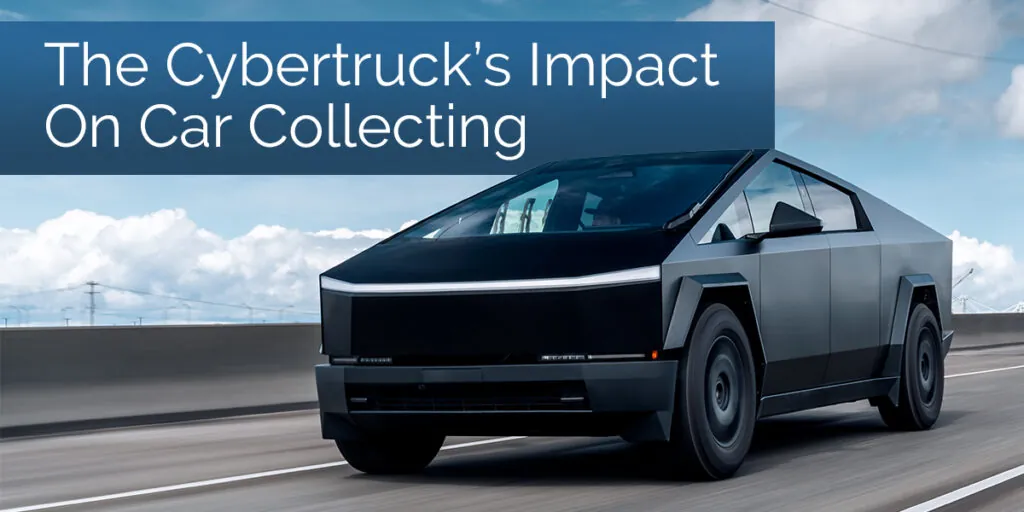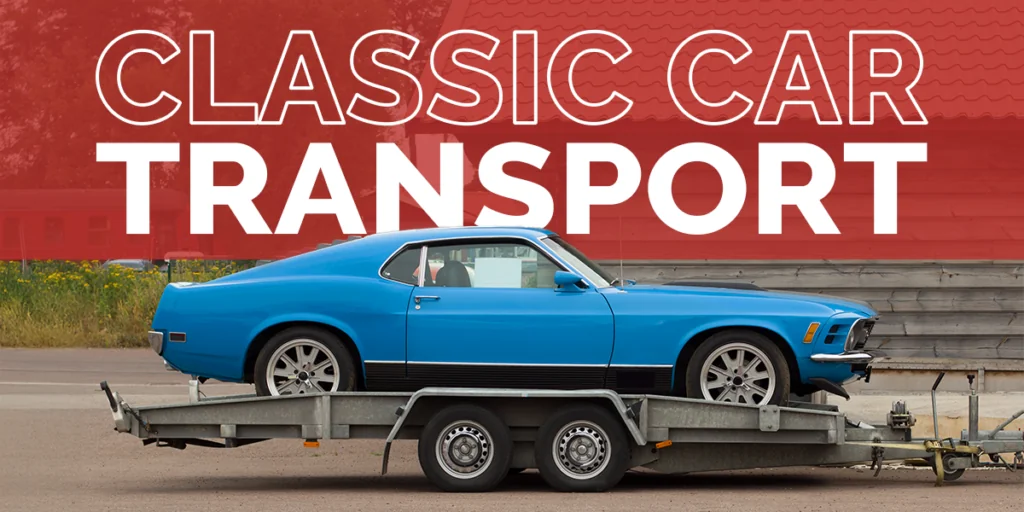When it comes to the most powerful muscle cars and raw American horsepower, Carly Simon was right: these are the good old days. The Chevrolet Camaro ZL1 makes 650 SAE net horsepower at a minimum. Ford’s Shelby GT500 ups the ante to 760 horses. Not enough? Dodge’s Hellcat Redeye Jailbreak (whew!) models twist the crank to the tune of 807 horsepower. All of these cars will start with a single twist of the key (or press of a button), run without a tune-up for 100,000 miles, and deliver gas mileage that’s no worse than that of a 145-horse 1982 Camaro Z-28.
Classic muscle cars of the late Sixties and early Seventies never made that much power. And it can be hard to determine how much power they did make, for a few reasons. The manufacturers were already feeling the heat of the “safety lobby” and some major insurance companies back then, so they had some incentive to under-report the power made by the various big-blocks and Hemi-headed monsters of the day. Engines were hand-built to greater tolerances, so there could be a significant difference in the strength of two cars that ran nose-to-tail down the assembly line. Regardless the comparison between vintage muscle cars and modern models, the demand for the vintage muscle has catapulted muscle car values over the years. Finally, it was fiendishly difficult to keep these carburetor-equipped cars running their best once they left that assembly line.
Today’s muscle cars are supercharged and computer-controlled, so you get almost the same power at different altitude, temperature, and humidity. That sure wasn’t the case in 1969. And, of course, very few of these cars stayed stock for long in the hands of their street-racing owners.
There have been various attempts made to determine the actual power of classic muscle cars. The most thorough effort was made by the late Roger Huntington, who was the first engineer to approximate some mathematical correlations between quarter-mile performance and raw horsepower. His equations are still in use today, decades after the fact. We’ve used his calculations, and other anecdotal data, to compile this list. Do you agree?
#10: Chevrolet L-78
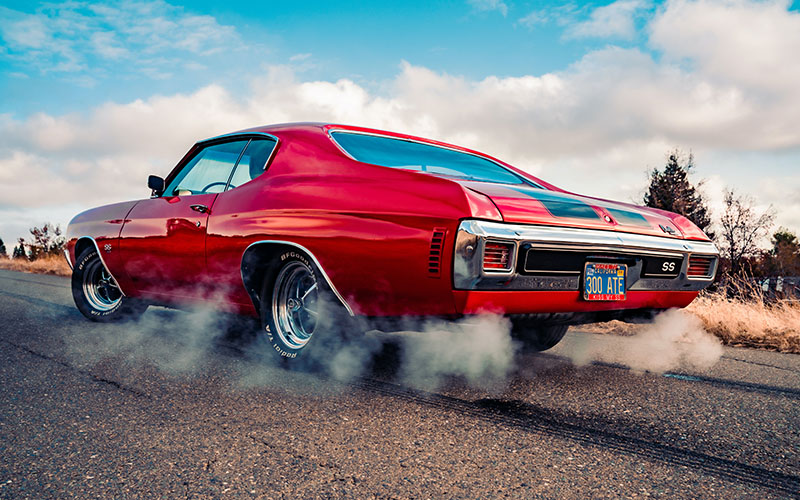
Estimated at 400 gross horsepower, the big-block L-78 was sold in both 396ci and 402ci displacements. It was available across the Chevrolet line, from the Chevy II/Nova to the 1965 Biscayne, and it also found a home in the Corvette and Camaro. The most common place to find it? In a late-Sixties Chevelle SS. Nearly 20,000 of these engines were installed in 1969, the most popular year for the L-78 and a clear standout for Chevy muscle cars. The fact that these big-blocks didn’t require any special exterior or trim packages made them deadly sleepers at Woodward Avenue and elsewhere; they also were easier to keep running than some of the competition.
#9: Ford 428 Cobra Jet
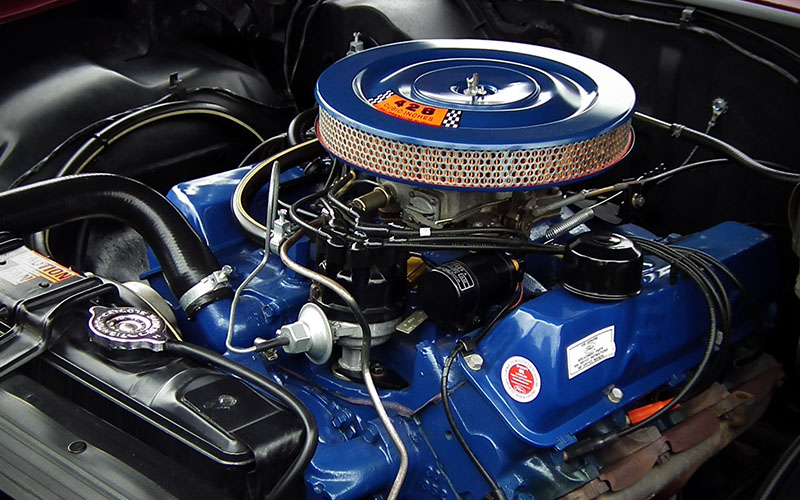
The 428 Police Interceptor engine was already strong when Shelby put it in the 1967 GT500 – but there was more to be had. A Ford dealership offered a hopped-up version in its cars, leading Ford to do some in-house development and produce the 428 Cobra Jet. About thirty different parts were upgraded, and although it followed the design philosophy of Tasca Ford’s improved 428PI, the Cobra Jet benefited from direct factory development. It was installed in the Shelby GT500KR, of course, but you could also get it in the Fairlane and Torino, plus Mercury’s Cyclone, Comet, and Cougar. Estimated at 410 horsepower, the 428CJ was serious business indeed.
#8: Pontiac Ram Air 400
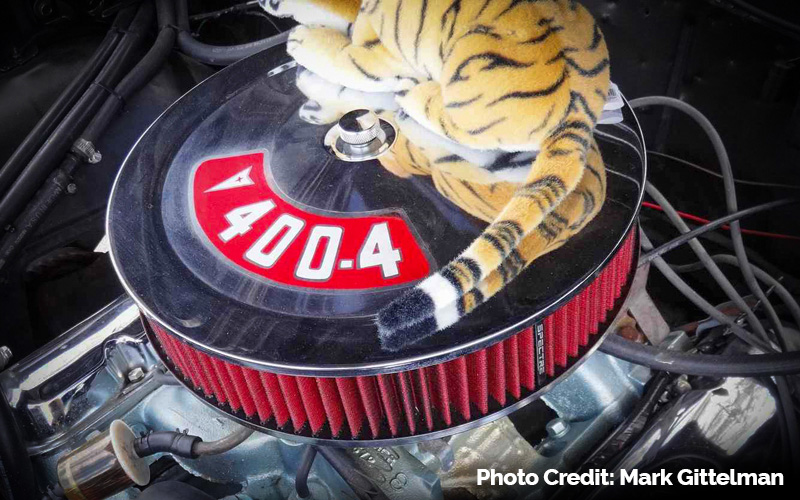
The 400-cubic-inch big-block V-8 made Pontiac’s reputation in the Sixties. While the early Pontiac GTOs were never quite as fast as the marketing suggested, the arrival of the 400 helped redress that balance and then some. The Ram Air variant that arrived in 1967 directed fresh exterior air to the intake, with changes to the valvetrain and exhaust to match. In 1968 the intake port was changed, as well. The following year, a more aggressive camshaft and four-bolt main were installed. Put it all together, and you get 410 horsepower… or more.
#7: Chrysler 440 Magnum

The Hemi was first, of course – but Chrysler was firing on all cylinders in the Sixties, reveling in its reputation as “the engineering company” among the Big Three, so they had the ability to develop a second big-block monster to provide Hemi-style performance at a lower price. A five-bolt main made the engine bulletproof. Boring out the 413-cubic-inch variant produced the fast-revving 440. It was underrated at 390hp but probably made more than 410. For three years you could get it across the Chrysler lineup, in all three brands. And it was trivially easy to increase the power in the aftermarket.
#6: Ford Boss 429
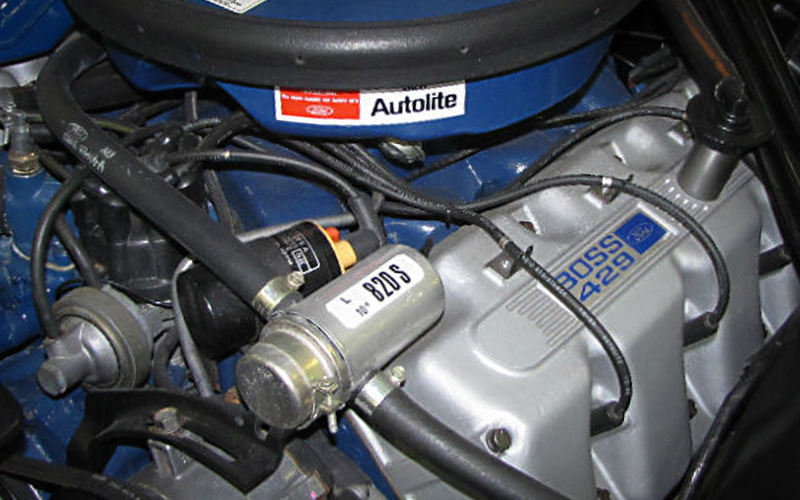
The 429 big-block was developed by Ford to counter Hemi dominance in stock-car racing, and as such it featured some of the same ideas, including a similar combustion chamber. The engine on which it was based, the Lima V-8, was an all-new design. Plenty of money was spent both in the design and construction of the engine, from the off-axis arrangement of the valves to the “gasketless” head assembly. When the “aero era” of NASCAR began, Ford held off on racing the 429, so the only place you could find it was in the limited-production Boss 429 Mustang, where conservative tuning and a small carburetor held power down to a still-more-than-respectable 420 estimated horses. The next time the Boss 429 would appear would be in a drag-racing Escort EXP, more than a decade later.
#5: Buick GSX 455 Stage 1
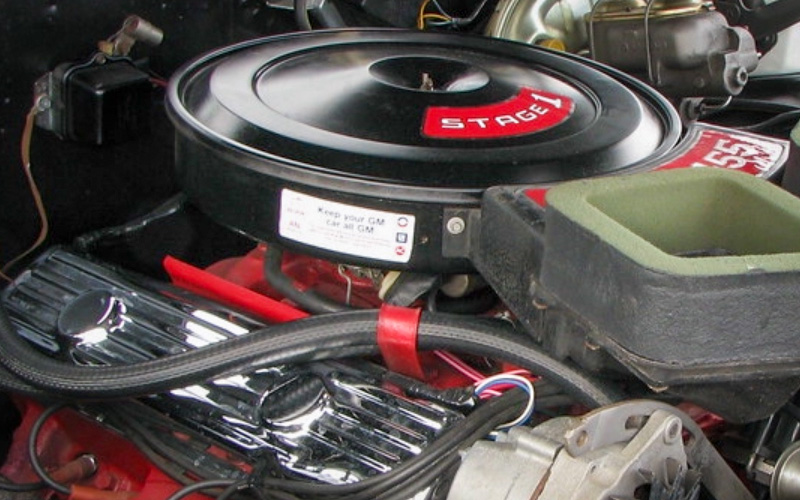
Buick had its own big-block in the Sixties, developed from scratch in-house to replace the previous “nailhead”. Expanded to 455 cubic inches, it was the perfect powerplant to move an Electra 225 down the road in total confidence – but you could also tune it up a bit, put it in an intermediate chassis, and win a heck of a lot of street races. The increased displacement came from boring-out the block, meaning the Buick could rev a bit, as well. In Stage 1 trim, the GS and GSX variants of the intermediate Skylark were probably making more than 420 horsepower. It was a runner for sure, and not what you’d expect from a brand that was still known as “the doctor’s car” in much of America.
#4: Chrysler 440 Six-Pack
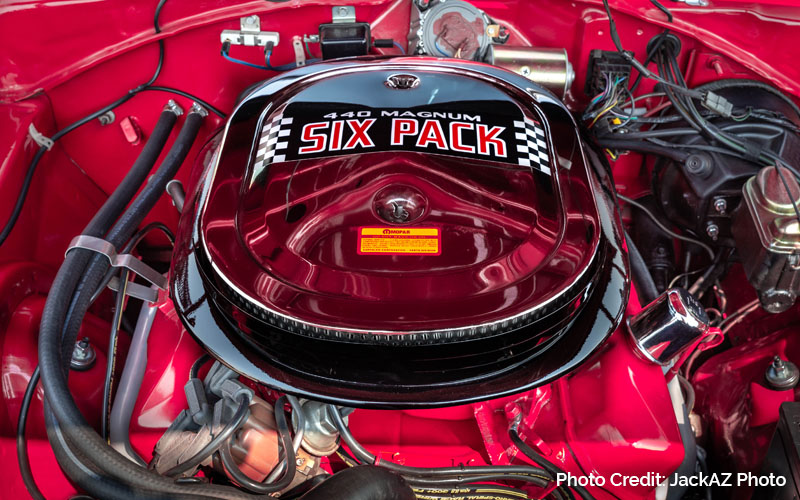
Adding three two-barrel carbs to the 440 Magnum made it a Six-Pack. The real horsepower was north of 430, but you also got fantastic durability out of the package. Most encountered in a Charger two-door sedan, the Six-Pack could be had in less flashy Mopars as well. If you listen to the old Detroit street racers, they’ll tell you that a lot of Hemis were defeated in asphalt combat by Six-Packs, for one critical reason: the 440 didn’t foul its plugs.
#3: Oldsmobile W30 455
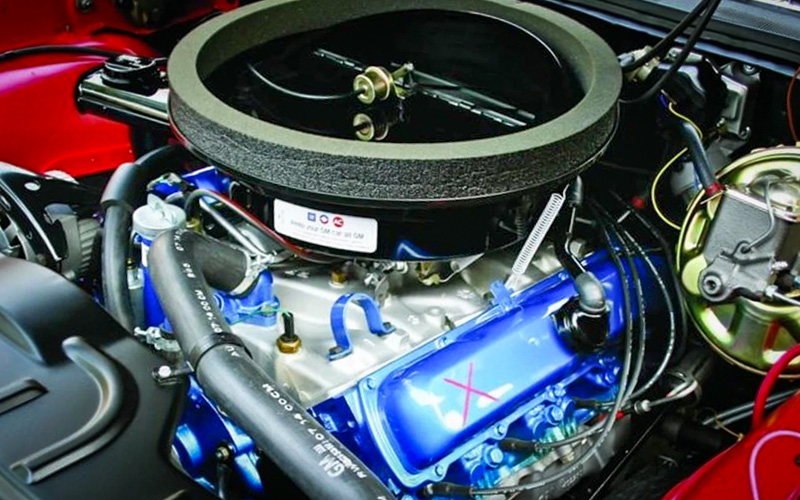
If Buick had a stodgy image in the Sixties, Oldsmobile was even more so – plus it wasn’t as upmarket as the tri-shield brand, so there just wasn’t a lot of excitement in dealerships. Unless, that is, you ordered your 4-4-2 intermediate with the W30 package. It started with the 455 big-block then turned up the wick with upgraded valvetrain, aluminum induction, dual exhaust, a cold-air scoop, and “select-fit” parts that were chosen to minimize tolerances. Contemporary performance tests suggest the Oldsmobile was almost the strongest GM series-production V-8 of the era.
#2: 426 Street Hemi
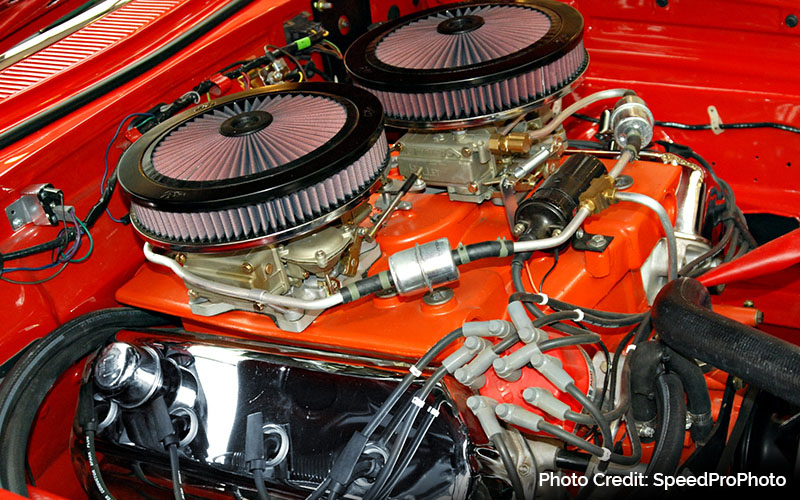
Everybody knows the story of this one, and everybody knows that the “elephant engine” was underrated from the factory. The only question is: by how much? Roger Huntington figured that the average Street Hemi was making 480 horses. There was plenty of variation in the actual production engines, of course, and they were hard to keep in tune. Still, there’s pretty much no substitute for a Hemi – because as strong as they were from the factory, there was almost unlimited potential for the aftermarket.
#1: Chevrolet LS6 454
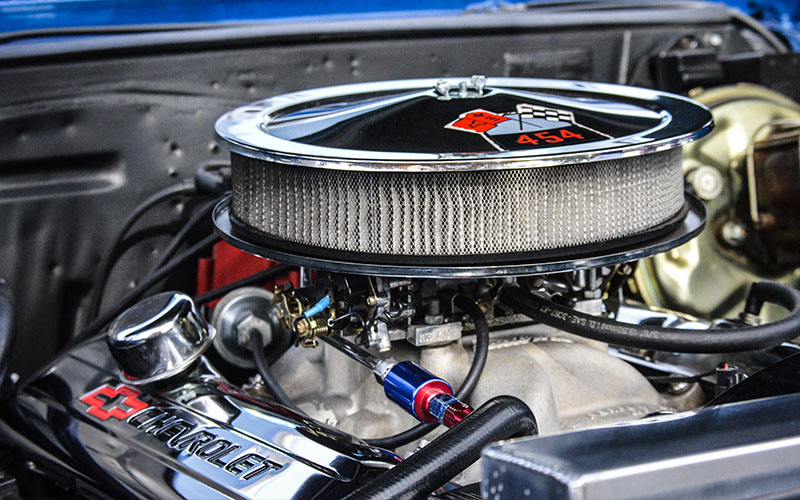
When Chevrolet put the new “Jet-Smooth” body on its traditional X-frame full-size sedan for 1963, it set a visual template for sedans that would persist all the way to the current year. Long, low, and clean, the new look of Chevrolet was so popular that the United States Government started thinking about anti-trust enforcement! And you could have it a literal million different ways, from thrifty six-cylinder taxicab Biscayne to roaring big-block V-8 Impala. It was certainly the finest and most capable automobile ever sold at an affordable price to the general public.
But what about…
Two engines didn’t make our list: the 426 Race Hemi that propelled the Hemi Dart to factory 10-second quarter-miles, and the mighty L-88, estimated to put out 480 horses or more. That’s because both of these were thinly-veiled race engines with specific instructions for fueling and maintenance. They were also vanishingly rare, with just over 200 L-88s and under 200 Hemi Dart/Barracudas produced.
Fifty years after the classic muscle car era, these top ten engines, and the cars in which they were installed, continue to generate excitement, discussion, and controversy. We’ll never know which ones were the most powerful – but with a list like the one above, every choice is a winner!
